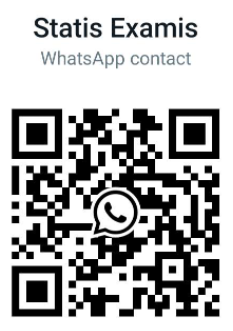Navigation » List of Schools » Glendale Community College » Psychology » Psychology 103 – Physiological Psychology » Spring 2022 » Exam 1
Question #1
A CT scans
B cerebral angiography
C X-ray photography
D pneumoencephalography
E PET scans
Question #2
A semantic memories.
B explicit memories.
C short-term memories.
D episodic memories.
E implicit memories.
Question #3
A the dominant wavelength that it reflects.
B its reflectance and the proportion of light of different wavelengths that it reflects.
C the dominant wavelength that it reflects and its reflectance.
D all of these
Question #4
A CT
B angiography
C EEG
D functional MRI
E PET
Question #5
A produce effects that are more diffuse.
B are more prevalent.
C all of these
D produce longer lasting effects.
E produce effects that take longer to develop.
Question #6
A have rectangular receptive fields.
B are unresponsive to diffuse light.
C all of these
D respond to contrast.
E respond best to straight-line stimuli in a particular orientation.
Question #7
A sodium amytal test.
B ERP
C dichotic listening test.
D Psychiatric Test Inventory (PTI).
E WAIS.
Question #8
A metabolism.
B synthesis.
C expulsion.
D excitation.
E exocytosis.
Question #9
A complex cells or hypercomplex cells.
B on-center or off-center cells.
C hypercomplex cells.
D type A or type B cells.
E simple cells or complex cells.
Question #10
A rods.
B the photopic system.
C the scotopic system.
D duplexity.
E rhodopsin.
Question #11
A the arrival of an AP at the axon hillock.
B the release of calcium ions from the buttons.
C an influx of calcium ions.
D an efflux of sodium ions.
E the sodium-potassium pump.
Question #12
A all of these
B receptor layer, bipolar cell layer, retinal ganglion cell layer and retinal ganglion cell layer, horizontal cell layer, receptor layer
C retinal ganglion cell layer, horizontal cell layer, receptor layer and retinal ganglion cell layer, amacrine cell layer, receptor layer
D none of the choices
Question #13
A the complementary color afterimage demonstration.
B the Mach band demonstration.
C the cocktail sausage demonstration.
D lateral inhibition.
E color constancy.
Question #14
A its sodium-potassium pumps are stimulated.
B there is an EPSP.
C the degree of depolarization on the axon adjacent to the hillock exceeds the threshold of excitation.
D there is an IPSP.
E its buttons are stimulated.
Question #15
A K+ ions into neurons. Na+ ions out of neurons.
B none of the choices
C all of these
D Na+ ions into neurons. K+ ions into neurons.
Question #16
A TMS
B EEG
C ERP
D 2-DG
E PET
Question #17
A retinotopically.
B ipsilaterally.
C from left to right.
D from top to bottom.
E on the basis of wavelength.
Question #18
A small-molecule neurotransmitters.
B glutamate.
C acetylcholine.
D dopamine.
E neuropeptides.
Question #19
A covalence.
B metabotropism.
C ionotropism.
D cohabitation.
E coexistence.
Question #20
A the damage that it produces lasts only a few weeks.
B the subjects usually survive.
C it produces lesions that can be reversed with drugs.
D it can temporarily suppress neural activity in a particular area of the brain without damaging the brain.
E the damage that it produces lasts only a day or two.
Question #22
A all of these
B fusiform face area.
C frontal lobes.
D dorsal stream.
E hippocampus.
Question #23
A all of these
B amino acids
C monoamines
D catecholamines
E indolamines
Question #24
A CT
B angiography
C EEG
D PET
E MRI
Question #25
A secondary somatosensory cortex.
B inferotemporal cortex.
C anterior cingulate cortex.
D posterior parietal cortex.
E PAG.
Question #26
A circles.
B movement.
C straight lines.
D contrast.
E dots of light.
Question #27
A random motion, which tends to move ions down their concentration gradients, and electrostatic pressure, which forces ions down their electrostatic gradients
B electrostatic pressure, which forces ions down their electrostatic gradients and sodium-potassium pumps, which distribute Na+ and K+ ions equally
C none of the choices
D sodium-potassium pumps, which distribute Na+ and K+ ions equally and random motion, which tends to move ions down their concentration gradients
Question #28
A neurotransmitter.
B IPSPs.
C EPSPs.
D APs.
E second messengers.
Question #29
A voltage-activated ion channels.
B EPSPs.
C myelin.
D ligand-activated ion channels.
E nodes of Ranvier.
Question #30
A middle SES.
B high SES.
C None of these
D low SES.
Question #31
A Exhaustion
B Resitance
C None of these
D Alarm Response
Question #32
A SNS
B HPA axis
C Selye
D PNS
Question #33
A axons.
B oligodendroglia.
C sulci.
D glial cells.
E neurons.
Question #34
A learning is to genetics and behaviorism is to ethology.
B learning is to genetics.
C genetics is to experience and learning is to genetics.
D behaviorism is to ethology.
E genetics is to experience.
Question #35
A serotonin
B dopamine
C None of above.
D stress
Question #36
A gray.
B plastic.
C immutable.
D white.
E static.
Question #37
A lower, blood
B zero, glucocorticoid
C higher, glucocorticoid
D lower, glucocorticoid
Question #38
A do not have opposable thumbs.
B have opposable thumbs that are not useful for precise manipulation.
C have tails.
D do not have tails.
E cannot walk upright for short distances.
Question #39
A parts of the autonomic nervous system.
B myelin.
C neuroglia.
D meninges.
E neurons.
Question #40
A guanine is to uracil.
B thymine is to uracil.
C thymine is to cytosine.
D uracil is to guanine.
E uracil is to thymine.
Question #41
A physiological psychology
B clinical psychology
C neuropsychology
D psychophysiology
E psychopharmacology
Question #42
A all of these
B subarachnoid space.
C lateral ventricles.
D central canal.
E none of these
Question #43
A brain stem.
B diencephalon.
C mesencephalon.
D medulla.
E pituitary.
Question #44
A biopsychology.
B neurophysiology.
C psychology.
D neurochemistry.
E neuroscience.
Question #45
A guano.
B confounds.
C canon.
D zeitgeist.
E converging operations.
Question #46
A Increased
B Reduced
C None of above.
D No
Question #47
A cerebellum.
B All of these
C great cerebral commissure.
D cerebral hemispheres.
E brain.
Question #48
A myelencephalon
B metencephalon
C telencephalon
D medulla
E mesencephalon
Question #49
A dominants.
B genotypes.
C gametes.
D alleles.
E phenotypes.
Question #50
A All of these
B immune system.
C hippocampus.
D human lifespan.
Question #51
A cerebral aqueduct.
B periaqueductal gray.
C substantia nigra.
D red nucleus.
E superior colliculi.
Question #52
A sympathetic nervous system
B somatic nervous system
C autonomic nervous system
D cranial nerves
E parasympathetic nervous system
Question #53
A human lifespan.
B ATP
C Sirt1
D All of these
E neurotrophins
Question #54
A Hypothalamic Pituitary Adrenal
B Hippocampus Percentage Area
C Hippocampus Pineal Anterior
D High Profile Axis
Question #55
A pure research.
B case-study research.
C applied research.
D biopsychological research.
E correlational research.
Question #56
A primates.
B new-world monkeys.
C old-world monkeys.
D langurs.
Question #57
A IQ.
B ability to tell time.
C memory.
D temperature regulation.
E
F attention.
Question #58
A learned response.
B consequence of hypothalamic damage.
C dualistic philosophy.
D deficiency in the awareness of parts of one’s own body.
E form of Korsakoff’s syndrome.
Question #59
A Fight-Flight Response
B Parasympathetic Nervous System and Fight-Flight Response
C Sympathetic Nervous System and Fight-Flight Response
D Sympathetic Nervous System
E Parasympathetic Nervous System
Question #60
A biopsychology.
B behavioral psychology.
C neurophysiology.
D cognitive behavior.
E neuroscience.
Question #61
A PNS and the CNS.
B ANS and the PNS.
C SNS and the CNS.
D ANS and the CNS.
E brain and the spinal cord.
Question #62
A critical thinking.
B comparative analysis.
C converging operations.
D functional imaging.
E scientific inference.
F
Question #63
A analogous and homologous.
B convergent.
C convergent and homologous.
D homologous.
E analogous.
Question #64
A many active areas of nongene (junk) DNA.
B various kinds of small RNA molecules.
C all of these
D histone remodeling as an important mechanism by which experience can influence gene expression.
E DNA methylation as an important epigenetic mechanism.




